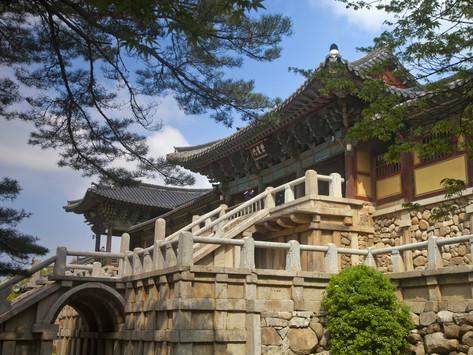Subdivisions 10 cities; 13 counties Area 19,030 km² Population 2.7 million (Oct 2014) | Area rank 1st Website gb.go.kr Colleges and Universities Yeungnam University | |
 | ||
Destinations Gyeongju, Ulleungdo, Cheongdo County, Uljin County, Pohang Points of interest | ||
North Gyeongsang Province (Korean: 경상북도; RR: Gyeongsangbuk-do; [kjʌŋ.saŋ.buk̚.t͈o]), also known as Gyeongbuk ([kjʌŋ.buk̚]), is a province in eastern South Korea. The province was formed in 1896 from the northern half of the former Gyeongsang province, remained a province of Korea until the country's division in 1945, then became part of South Korea.
Contents
- Map of Gyeongsangbuk do South Korea
- Geography and climate
- Culture
- Religion
- Administrative divisions
- References
Map of Gyeongsangbuk-do, South Korea
Daegu was the capital of North Gyeongsang Province between 1896 and 1981, but has not been a part of the province since 1981. In 2016, the provincial capital moved from Daegu to Andong.
The area of the province is 19,030 square kilometres (7,350 sq mi), 19.1% of the total area of South Korea.
Geography and climate
The province is part of the Yeongnam region, on the south by Gyeongsangnam-do, on the west by Jeollabuk-do and Chungcheongbuk-do Provinces, and on the north by Gangwon-do Province. During the summer, Gyeongsangbuk-do is perhaps the hottest province in South Korea. This is helped by the fact that the province is largely surrounded by mountains: the Taebaek Mountains in the east and the Sobaek Mountains in the west.
Culture
Gyeongsangbuk-do is the homeland of the former kingdom of Silla and has retained much of its cultural tradition. A number of artists, political leaders and scholars have come from the province.
Religion
According to the census of 2005, of the people of North Gyeongsang 33.9% follow Buddhism and 18.6% follow Christianity (11.5% Protestantism and 7.1% Catholicism). 47.5% of the population is mostly not religious or follow Muism and other indigenous religions.
Administrative divisions
Gyeongsangbuk-do is divided into 10 cities (si) and 13 counties (gun). The names below are given in English, hangul, and hanja.
